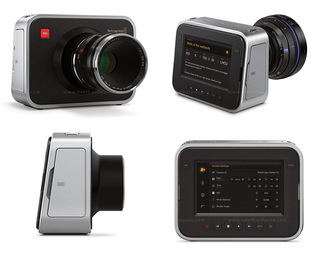 http://tinyurl.com/lgz3kxu
http://tinyurl.com/lgz3kxu There have been some weaknesses to the camera, however. The most pressing issues are the necessity of file storage capabilities and the rolling shutter. Shooting in uncompressed RAW can cause the SSD card to fill up relatively quickly, which makes storage of the files significantly more important. If shooting with this camera, make sure that you have access to large amounts of storage. You can however shoot in ProRes or DNxHD, which are both compressed and can give you a greater amount of file space for your footage on each SSD card. The rolling shutter is also a negative feature. This is most often seen in DSLR's, and can effect the quality of a moving image, particularly when something is moving up or down. This can cause the image to become distorted, as seen in the fan below. While these weaknesses in the camera can cause problems, the low price of the camera makes up for these somewhat avoidable irritants.
The Blackmagic aims to provide filmmakers with an affordable camera with a professional level of quality to the image. While this digital camera derives much of its functionality from DSLR's and other less professional cameras, the software as well as the image quality maximizes its capabilities, making it one of the most competitive machines on the market. Because these camera's were only released in July 2013, there are no current scheduled films using Blackmagic, but keep your eyes open for news on the cameras, particularly from Indie filmmakers. Hopefully this can inspire other digital camera developers to continue to improve on their competitors already impressive products.
To check out some Blackmagic Cinema Camera footage, see the video below.



 RSS Feed
RSS Feed
